Smack in the middle of Wallblake, halfway between George Hill and The Valley, by what has grown into Government Corner and in close vicinity to the Post Office, sits a building which, though unassuming, has been at the core of the Anguillian experience for more than a hundred years. Known these days as the Old Factory Complex, the home of GUM/KO might not strike at first as a particularly remarkable structure—certainly not compared to the grand Wallblake House, one of the oldest manors on the island, the beautiful Koal Keel at the old Warden’s House, or the ornate St. Gerard’s Catholic Church across the road—but the fact is that through the twentieth century this construction played as significant a role in the lives of the people of Anguilla as any other.
The story of the Factory goes back to the 1910s and is intrinsically connected to that of the cotton gin just west of it. Cotton has grown in Anguilla since times immemorial (i.e., since before the first contingent of European loafers rocked up in their boats in the 1600s) and the island’s particular strand proved exceptional, due mostly to its long fiber and resilient black seed. Indeed Anguillian cotton was so popular (and highly valued) in the late 1700s that the first gins to emerge in the United States (and The Bahamas before that) were specifically designed to separate its long-fibered lint from its seeds without damaging the staple. As a matter of fact, more than one plantation in Georgia and South Carolina was named Anguilla after the origin of the Sea-Island cotton they cultivated, and in Mississippi there is even a town called Anguilla, pretty much for the same reason.
In Anguilla, British West Indies, however, processing the harvested cotton remained an entirely manual labor until the entrepreneurial Carter Rey, who at the time held the lease to Wallblake House and owned the salt picking industry at Road Bay, erected Anguilla’s first (and only) cotton gin. Next to it he also built a general store, the Factory, a name which has led to confusion because its modern usage suggests products were manufactured there. In fact nothing was produced either at the cotton gin, where the thread was cleaned and packaged for export, or at the Factory, which alluded instead to a now archaic connotation of the word as a trading post, especially in a foreign country, where manufacturers (factory owners, facturers) would get whatever they needed.
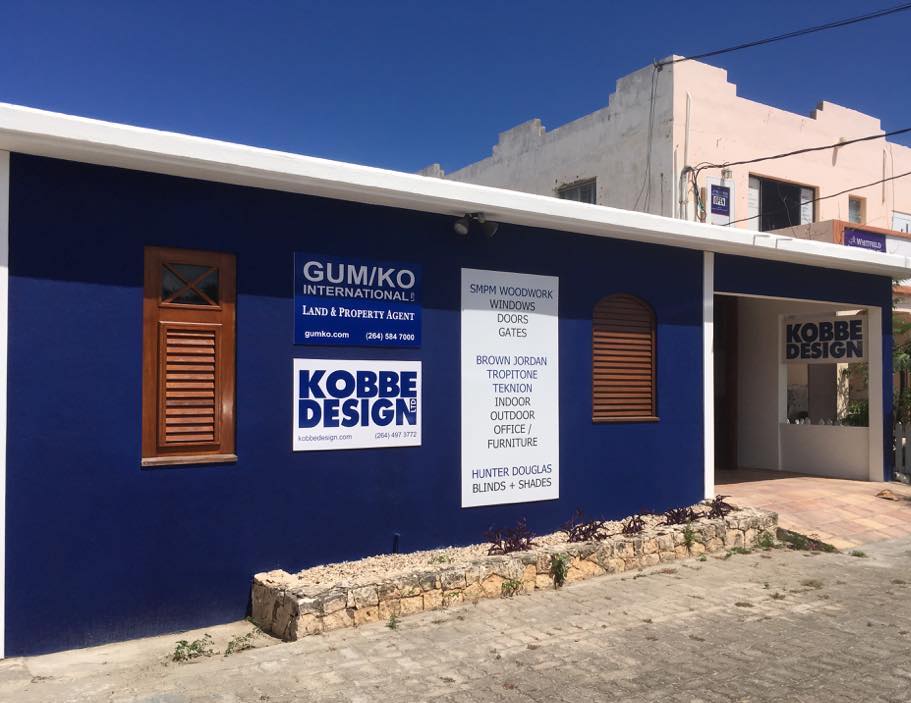
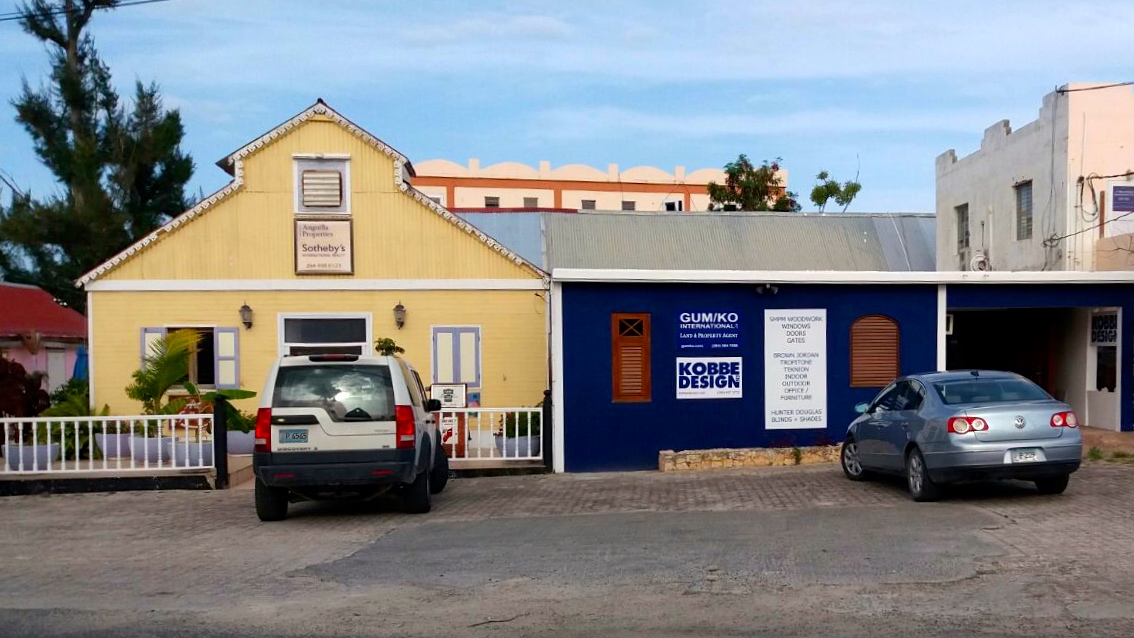
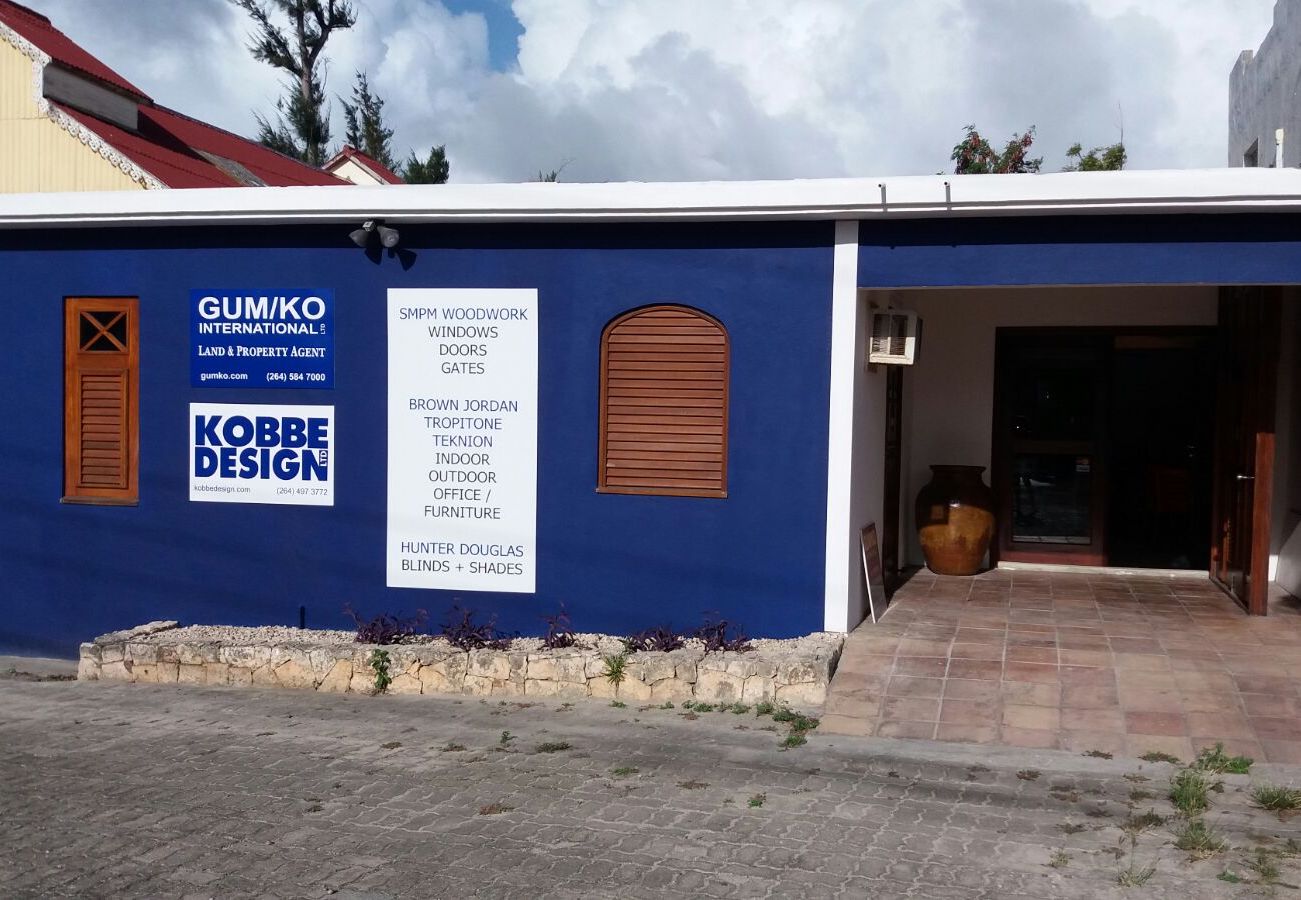
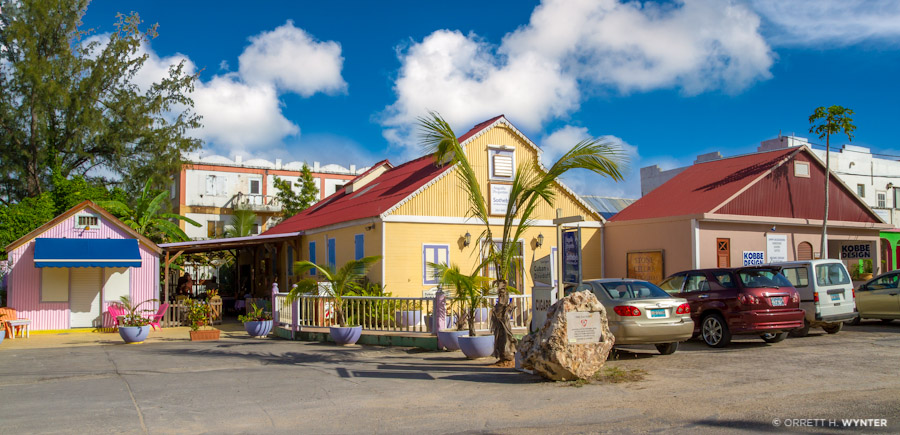
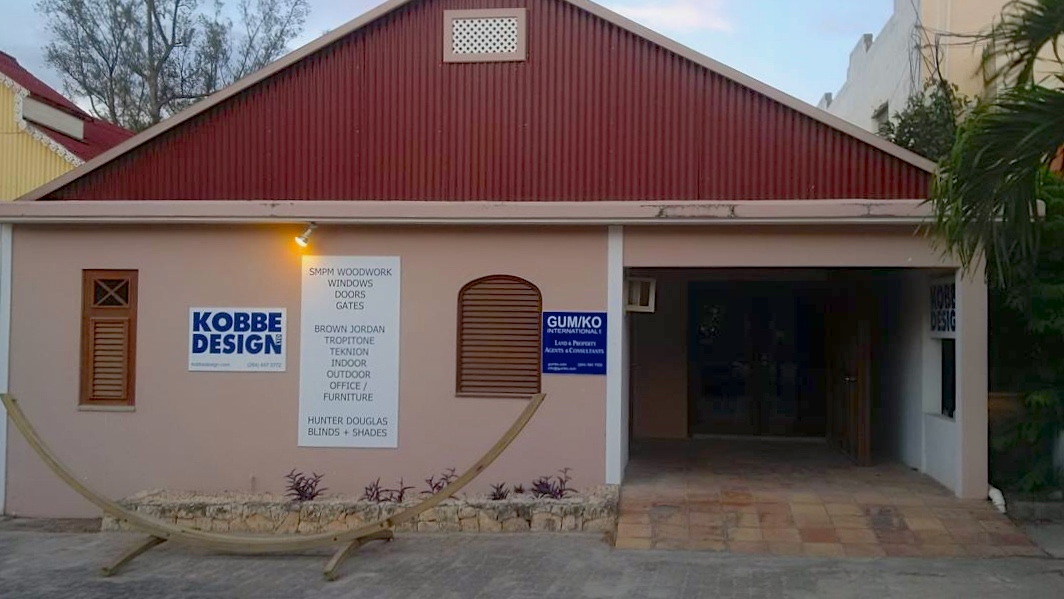
The Old Factory Complex after Irma and before the storm (panoramic pre-Irma photo sourced from issue 6 of Design Anguilla)
The Factory, with its gabled roofs and simple rectangular layout, ended up outliving by a good decade the cotton gin, which was forced out of business in the 1950s. In Anguilla in the 1980s people still recalled with affection the days—before the revolution—when the only place to get wares was the Factory. The Age of Tourism, however, was not terribly kind to the historical buildings: while in Sandy Ground the pump house was turned in the 1990s into the bar of the island, the ice cream parlor at the cotton gin (with all the machinery still there, intact, and even the odd bit of lint hanging here and there) simply didn’t take root in the same way. The old Factory, on the other hand, was picked up by the colorful Nik Douglas, a chameleonic character with a keen interest in (among many things) archeological objects, to open his World Gallery of art objects and artifacts. Nik’s clientele, however, was mainly foreign and eventually he moved out to the West, where he could more easily profit from tourists. By the 2000s the cotton gin had turned into a Chinese restaurant while the old Factory was occupied by a fried chicken joint—things were not going in the right direction.
Fortunately in 2008 Scott Hauser, Anguilla’s resident Harley Davidson enthusiast and in-sync co-president (with GUM/KO’s own Mustang man, Adrian Kobbe) of the Anguilla Real Estate Association, picked up the master lease of what once had been the Factory, embarking on a total renovation of the place. Hauser fitted a new hipped roof on the concrete annex that today is home to GUM/KO’s sister company Kobbe Design, upgraded the original wooden structure with beautiful traditional shutters, made the stone cellar watertight, and rehabilitated a small wooden house just east of the Factory which once had been a local soda bottling plant (before becoming a paint shop). The complex, with the popular Valley Bistro spanning the area between the former bottling plant and the old Factory, was good to go for another ten years.
Until the largest storm on record hit the island in 2017, claiming among many other things, the ornamental roof over GUM/KO’s head. But even Irma couldn’t beat the Old Factory to the ground, and in 2018 we tackled the latest batch of structural work determined not only to bring the building back to pre-Irma standards but actually to make it better than it had been. We’re fairly confident that a bold color combination has brought some long-lost swagger to the old dame, and even with the original flat roof—streamlined, let us call it—who could deny that there is life in the Old Factory yet.
